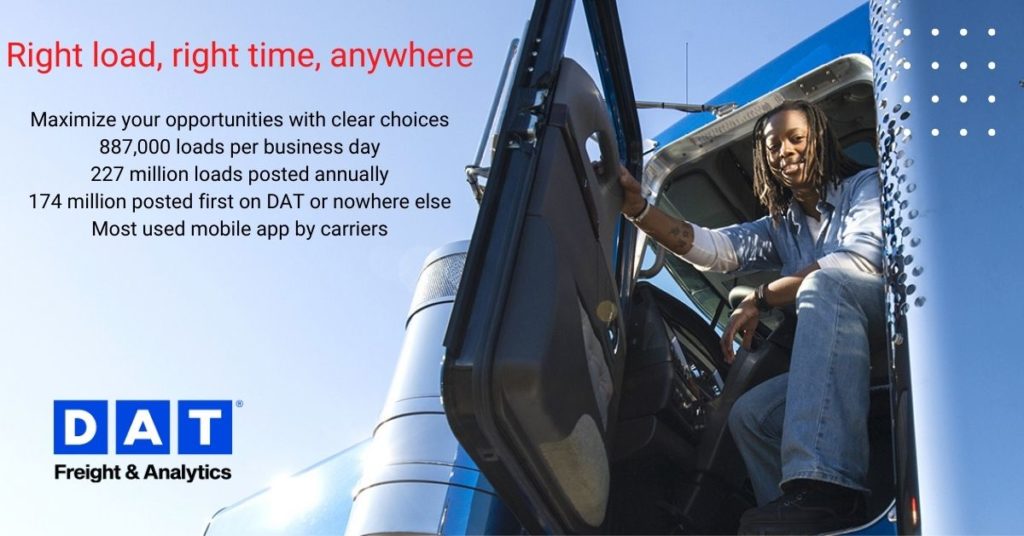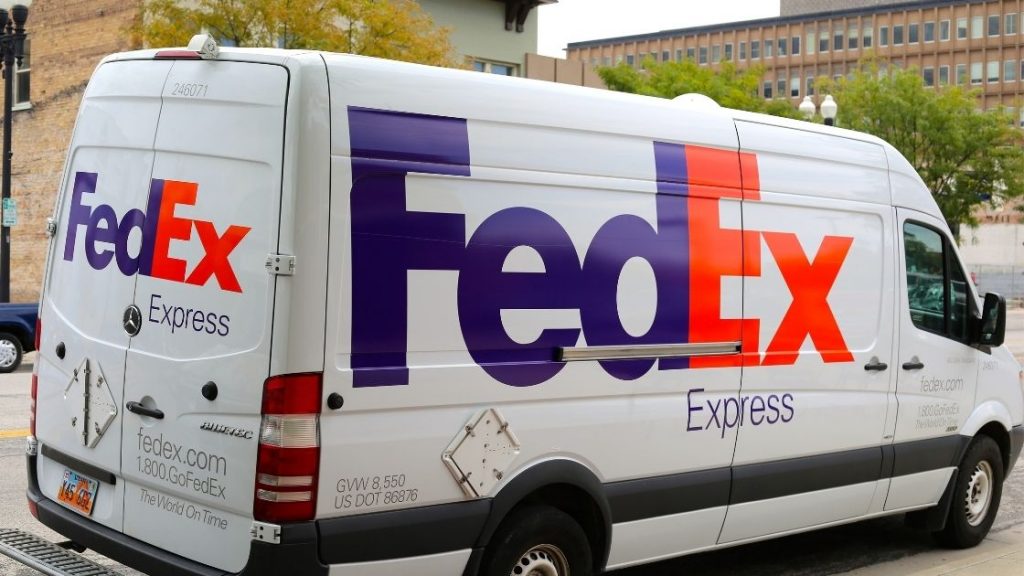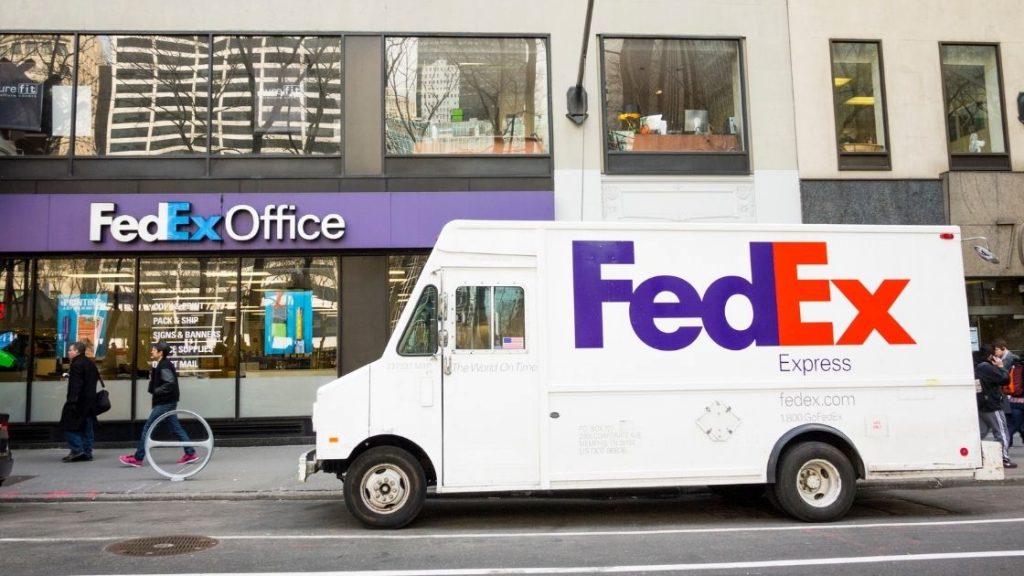If you are interested in starting a trucking company, but don’t have the money to do it, you are in the right place.
In this article, I am going to discuss how you can start a trucking company with no money. I will cover financing options for getting your truck (including links to companies that offer 100% financing for trucks), and give you helpful tips on how to obtain money quickly for a down payment in case you don’t qualify for full financing.
I’ll also cover how to set up your trucking business properly, including establishing the business entity, getting the right licensing and permits, finding effective ways to get loads, and much more.
Before we get into all of that, I’ll start by answering some introductory questions, including how much it costs to start a trucking company and how much money a trucking company can make, but if you want to dive straight into the guide, click here.
How Much Does It Cost to Start a Trucking Company?
In general, it will cost $150,000 to $200,000 to start a trucking company where you are the owner-operator of a new semi-truck and trailer. The majority of that cost will be due to purchasing the truck, trailer, and equipment, but additional costs may include licenses, fees, insurance and costs associated with forming your business entity.
Of course, buying a used truck and trailer will significantly lower your start-up costs. While a new semi-truck can cost between $130,000 to $200,000, a used semi-truck can be purchased for as low as $30,000, but most will cost more. In fact, even used trucks can be priced as high as $180,000, depending on the year, make and model.
How Much Can a Trucking Company Make?
According to CTA Trucking (a long haul transportation company), the average gross revenue of most of their trucks is between $4,000-$10,000, with take home pay for an owner-operator being around $2000-$5000 per week. That translates to between $104,000 – $260,000 if you work all 52 weeks.
Of course, your actual net income will vary depending on a lot of factors, including the type of trucks you operate, the number of trucks in your business, how profitable your loads are, how well you manage expenses, and a host of other factors. But below is a table showing estimated income for various owner-operators by truck type.
| Truck Type | Estimated Annual Income |
| Truck Owner-Operator (according to Ziprecruiter) | $235,233 |
| Box Truck Owner-Operator (according to Ziprecruiter) | $106,431 |
| Cargo Van Owner-Operator (according to Ziprecruiter) | $76,383 |
| Pickup Truck Owner-Operator (according to Ziprecruiter) | $96,680 |
How to Get 100% Financing For Your Trucks
The first and most important part of starting a trucking business with no money is finding a way to obtain your truck without any cash out of pocket. There are a number of ways to do this, but the most straightforward is to find a lender who will give you a loan for the full price of the truck.
That’s going to be a real challenge because trucks are depreciating assets and even if the loan is secured by the truck, the lender stands to lose money if you default on the loan.
But that doesn’t mean it’s impossible. I have done a lot of research and come up with the following companies that offer 100% financing for semi-trucks.
Crest Capital is one option that offers up to 100% financing for semi-trucks. But you will need to meet their underwriting criteria, which includes at least two years in business. That may not work if you are a brand new start up.
Trust Lenders USA also offers 100% financing, but requires a 675 credit score and 2 years in business as well as certain other requirements.
Now CAG Truck Capital specializes in start ups, so you may want to check them out. Although they may not offer 100% financing, they will consider you even if you are just starting out. The best part is that they will finance used trucks, which can often cost a fraction of the cost of a new truck, so your actual down payment may wind up being fairly reasonable.
If you are completely broke and need to find money for a down payment, there are options here as well. You can explore any of the following to get you started:
- Personal savings. You will often need some skin in the game before lenders will work with you, so having some personal savings is important. If you don’t have anything saved up, here are some easy and quick ways to make money fast by holding a virtual garage sale.
- Cash Advances From Credit Cards. Due to high interest rates, cash advances from a credit cards are probably not an ideal choice, but they can serve in a pinch.
- Friends and Family. Although these people may be willing to lending you money, you have to weigh that against the risk of souring your relationship with them if things go sideways.
- Online Funding. This includes includes getting a loan using peer-to-peer lending like Prosper.com, funding through kickstarter campaigns, using online lenders, etc.
- Retirement Accounts. Now this should only be used as a last resort, but if you have a 401(k), IRA or other retirement account, you may be able to withdraw from those accounts to fund your start up costs. You will likely be subject to penalties and taxes, though, so you should consult with a qualified accountant or financial advisor being doing this. It’s a dangerous option, for sure, because retirement funds should be earmarked for retirement, but I include it for the sake of completeness and laying out as many available options as possible.
No Money Down Leasing Options
Of course, owning a truck is not the only way to start a trucking business. You may find that leasing a truck is a far more affordable way to start. Places like Trust Lenders USA offer leasing with no money down. You can choose from a variety of leasing options, including rent to own type leases if you want to ultimately own the vehicle at the end of the lease term.
Leasing is definitely worth exploring if your goal is to start your trucking business with as little money down as possible.
Financing For Other Truck Types
Semi trucks are not the only game in town.
You can start a trucking company with something as simple as a used pickup truck and trailer. In fact hotshot trucking is a popular and profitable trucking niche. If you want to learn more, check out my full article on how to start a hotshot trucking business.
You can also start a trucking business with a box truck (aka straight truck) or even a cargo van or sprinter van.
Using one of lower priced vehicles for your trucking business can be a great way to minimize initial costs. In fact, pickups and cargo vans are sold by regular car dealerships, who often have 0% down financing offers. It’s a much easier way to start, and qualifying is also far easier because you don’t have to show a certain number of years in business.
As long as your personal income, credit score, etc. are acceptable, you can qualify for financing on these “regular” vehicles.
If you want to learn how to start trucking businesses with these vehicles, check out my articles below:
- How to Start a Box Truck Business
- How to Start a Cargo Van Business
- How to Start a Pick Up Truck Business
How to Set Up Your Trucking Business
Step 1: Establish Your Business

Set Up Your Business Entity
You may want to set up a business entity like an LLC, corporation, or partnership for your trucking business. Why do this? In most cases, setting up a business entity can help shield some of your assets held outside the business entity if there is a claim against the business.
If you want to make the investment of setting up a corporation, LLC, or some other business entity, you can hire a lawyer to help you, or you can use many of the online resources that can help you set up your business entity. For a handy table comparing the different types of business entities, check out my ultimate guide to starting a business.
I like Northwest because they can get you up and running quickly and easily. They are also one of the most affordable options that I was able to find that still offered great customer service ($39 as of the date of this article).
According to their website, they are the only national registered agent service that lets you use their office address so you don’t have to use your own. That’s a killer privacy advantage.
Definitely worth checking out.

Step 2: Fulfill General Trucking Qualifications
Before you go too deeply into exploring a trucking business, you need to ensure that you will be able to meet all of the physical, legal and other requirements for the business. Here are the basic requirements:
DOT Medical Card
In general, you will need to pass a Department of Transportation (DOT) physical and receive a medical card. This signifies that you are physically capable of handling the work required for this type of activity.
Commercial Drivers License (CDL)
Not all trucking businesses require a CDL (semi-trucks will), but if you don’t have one already, you will need one if you plan on operating vehicles that meet or exceed certain weight thresholds. According to the Federal Motor Carrier Safety Administration (FMCSA), you will need a CDL under the following conditions:
You operate in interstate, intrastate, or foreign commerce and drive a vehicle that meets one or more of the classifications of a CMV described below:
Class A: Any combination of vehicles which has a gross combination weight rating or gross combination weight of 26,001 pounds or more, inclusive of a towed unit(s) with a gross vehicle weight rating or gross vehicle weight of more than 10,000 pounds.
Class B: Any single vehicle which has a gross vehicle weight rating or gross vehicle weight of 26,001 pounds or more, or any such vehicle towing a vehicle with a gross vehicle weight rating or gross vehicle weight that does not exceed 10,000 pounds.
Class C: Any single vehicle, or combination of vehicles, that does not meet the definition of Class A or Class B, but is transporting material that has been designated as hazardous under federal law.
If you want more info on CDL requirements, check out the FMCSA page on the topic.
Get Your Trucking Authority (USDOT Number and Motor Carrier (MC) Number)
According to the FMCSA, if you are plan on engaging in interstate commerce (delivering across state lines) and your vehicle meets certain weight requirements then you will need a USDOT Number. Many states also require you to have a USDOT number even if you are only engaging in commerce in that state.
In addition to getting your USDOT, you will need a MC number. Again, this only applies if you plan on engaging in interstate commerce, you don’t own the freight you are transporting, and you will be receiving a fee for providing such transport. For more details on MC numbers, check out the FMCSA website on the topic.
Getting your own authority is a fairly extensive process so you should be prepared for that.
Motor Vehicle Record
Although not critical, it is a good idea to pull a motor vehicle record so you know your driving record. Insurance companies will want to know. The good news is that it doesn’t cost much to get and obtaining one should be a pretty straightforward process.
Step 3: Create a Business Plan
During the course of getting your preliminary requirements in order, you should be developing a business plan. A business plan is essentially a roadmap for your trucking business.
It organizes your thoughts relating to your business into an actionable plan. Some things to include in your business plan are figuring out expected income (including how you will set prices), calculating expected costs, identifying how you will get loads, operational plans (will you hire drivers, etc.), and growth projections.
Don’t stress too much about getting your business plan perfect. I would use it more as an organizational tool at this point. You can polish it up later if you need to.
Another benefit of having a business plan is that it can help you raise money from banks and investors (if your business has high starting costs, you may need to get some financing right away). This is when you will need to refine your business plan – these folks will want to see a professional-looking business plan as part of their lending or investing process.
Don’t know how to get started? The Small Business Administration has a great tool to help you write your business plan.
Step 4: Open Up a Business Checking Account and Credit Card
You should open a dedicated checking account in the name of your trucking business.
Make sure to run all business revenue and expenses (and only business revenue and expenses) through that account. This is especially important if you have a formal legal entity like a corporation or LLC because you do not want to mingle personal assets and expenses with business assets and expenses.
Why? Keeping this separate will help with liability protection and having a separate account keeps things tidy from a recordkeeping and accounting perspective.
If you don’t know where to get started, check out Novo.
They are perfect for new small businesses because they offer no monthly fees or minimum balances, and give you unlimited ATM fee refunds. On top of that, they give you access to tons of other free perks, like major discounts on places like Stripe, Quickbooks and Google Ads.
In my opinion, they are one of the best options in the market.

Now, let’s turn to business credit cards. Credit cards can be really helpful to a new hot shot truck business, especially if an expensive repair pops up!
First, they are often easier to qualify for than a line of credit, especially when you are a brand new business. Even if you don’t need to use it right away, it’s nice to have the funds available in a pinch. Second, it’s a great way to build your business credit rating, which will come in handy if you need to apply for a loan in the future to expand your business, etc.
Finally, you get to enjoy the benefits of points, cash back or other rewards that may come with owning your business credit card. However, just like your business checking account, avoid intermingling business expenses with personal expenses on your credit card.
Step 5: Obtain Funding and Buy Your Truck, Trailer and Equipment

We already covered this step at the top, since that was the focus of this article, so I won’t go over it again. Do your research and find some lenders that will work with you. Get your credit in shape and try to build up some savings too. It can only help when applying for financing.
Step 6: Hire Drivers (If Needed)
Not every trucking business will need employees in the beginning. If you are going to be an owner-operator, then you can run your own loads without any other drivers. But if you are not going to be driving or want to position your business for growth as soon as possible, you will want to hire qualified drivers.
If you are already a driver in the industry, you should know people already who can fit the bill, but if not, no worries. Here are some tips to recruit drivers:
- Have a very clear idea of what the job requires and write a comprehensive job description. If you have clean driving requirements, or other requirements, clearly list them.
- Cast a wide net to get candidates – post the job online and through local venues, ask around for referral candidates, etc.
- Interview promising candidates and select them based on their qualifications (you need to make sure you do not discriminate on a prohibited basis, like race, color, religion, sex, etc. during both the interview and hiring process).
- Make sure you have the right infrastructure in place to manage payroll. There are tons of payroll administration providers who can take care of the legal and other requirements to make sure you handle the withholding and payment process without issues. I use Surepayroll – they are affordable and a pretty big name in the industry.
Step 7: How to Get Contracts (Loads) For Your Trucking Business
One of the things you absolutely need to get right is getting consistent and profitable contracts (or loads) for your trucking business.
Here are some practical strategies you can use to get them.
Load Boards
One of the most common methods for getting loads is signing up for load boards. These are generally online boards that list loads for delivery that you can access. Many (but not all) charge a fee to use them.
The leading load board out there is DAT.
They have the most loads on their network, with around 1.37 million loads posted daily. Because of their size and scope, they also have leading edge tech and info, including unlimited searching, instant alarm match notifications, broker credit scores and days to pay, market rates, mileage routing and much more.
I have an affiliate relationship with them and secured a deal where if you use my link, you can get a free 30 day trial with full access to their network and features. So, you get to try out the leading load board for a full month for free. I would note that this deal is only for new subscribers.
If you are interested, just click below to take advantage of this no-risk offer.

Other general loads boards include Truckstop.com., 123 load board, and Trucker Path.
Conclusion
So there you have it – a step by step guide to starting a trucking business with no money.
If you want to learn more about transportation businesses in general and are looking for inspiration, take a look at my ultimate guide to transportation business ideas here. I discuss over 30 business ideas that you can start in the transportation industry (with helpful info and tips on how to begin).
We cover businesses you can start with semi-trucks, box trucks, dump trucks, cargo and passenger vans, pick-up trucks and even regular old cars. So whatever your budget and experience, there will be ideas that can work for you.
If you want a compilation of the best trucking businesses to start, check out my article on the topic here, which covers more than 20 trucking businesses.
Licenses and Permits
Other Start-Up Costs and How to Finance Them
Licenses and Permits
Supplies and Equipment
Insurance
Ongoing Expenses (Fuel, Tolls, Repairs and Maintenance, Employees, Marketing, Load Boards)
Link to How to Start a Trucking BusinessBest Trucking Business to Start

